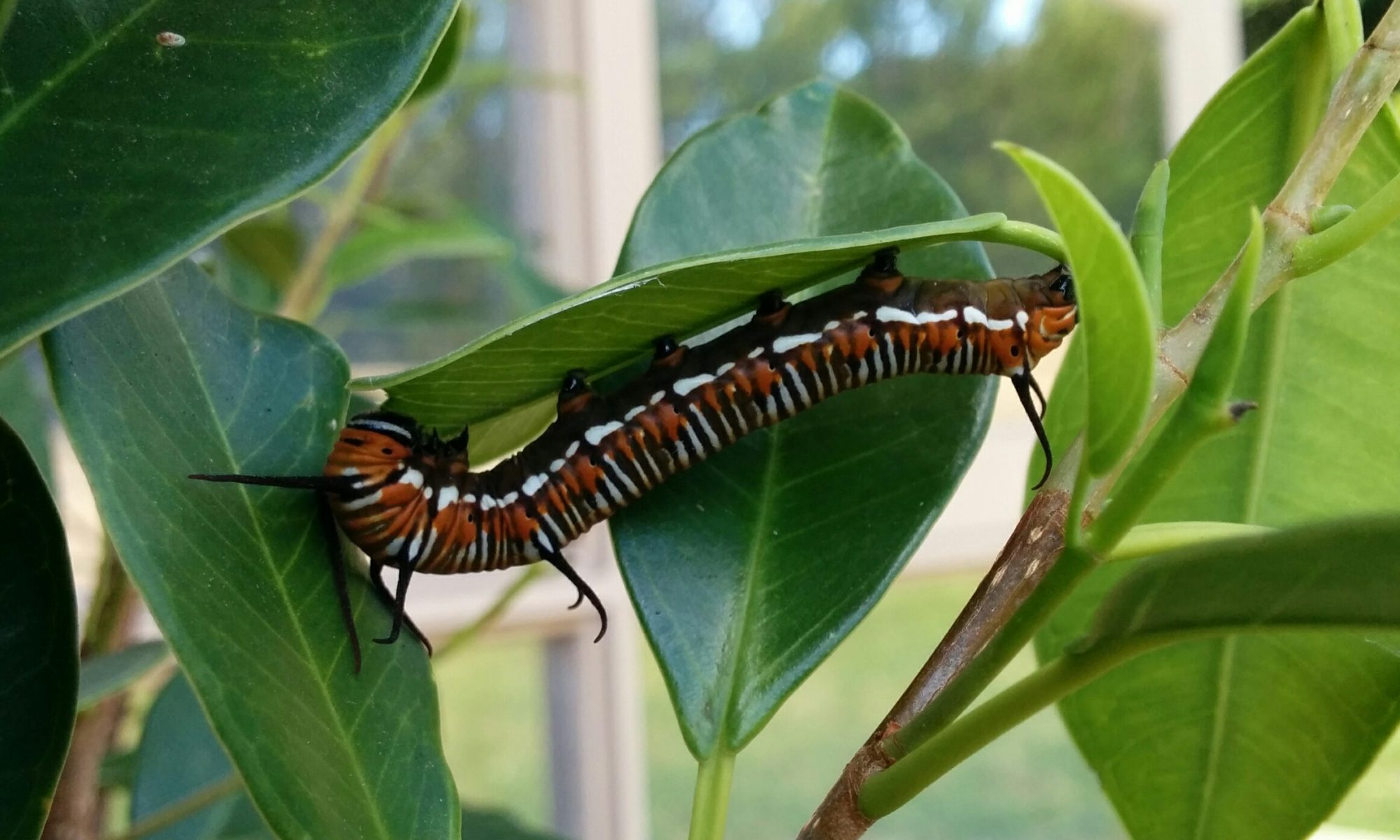I finally made it to the Age of Fishes Museum at Canowindra to see the 360 million year old Devonian Fish fossils. Visiting this site has been on my bucket list for years and I was very excited to explore the museum and visit the fossil site.
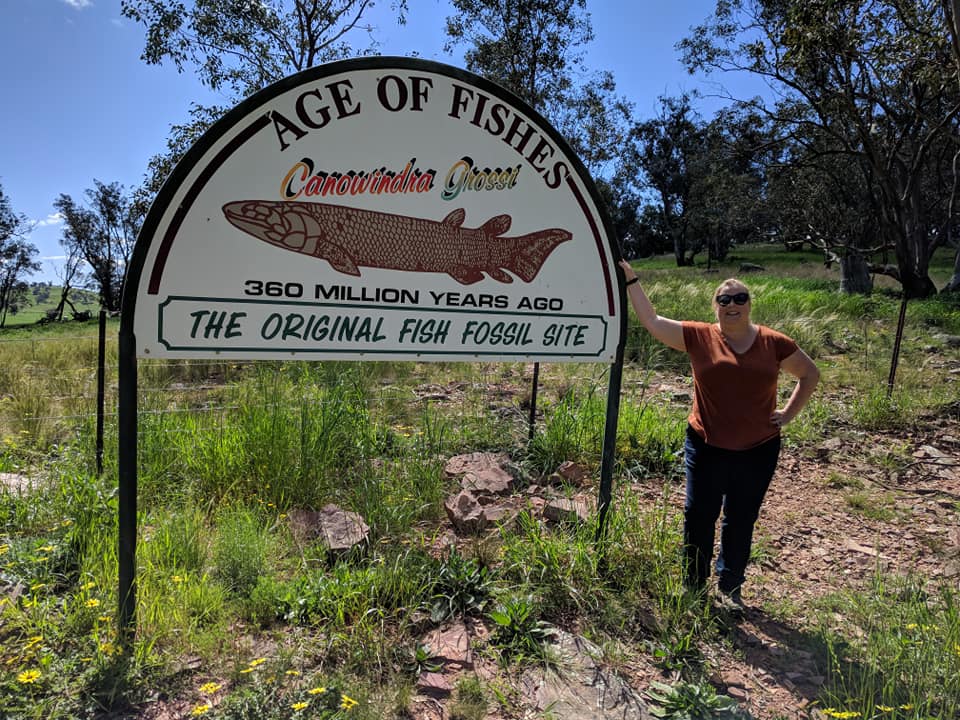
The story of the discovery of the 360 million year old Canowindra fish fossils has been with me since my first day as an Australian Museum volunteer over 20 years ago. I remember seeing this slab of rock mounted on the wall and being told an amazing story of how it was found. I have been fascinated ever since and used to touch the slab every time I walked pass and tell the story to visitors. 20 years on I still tell the story to students during my fossil programs.
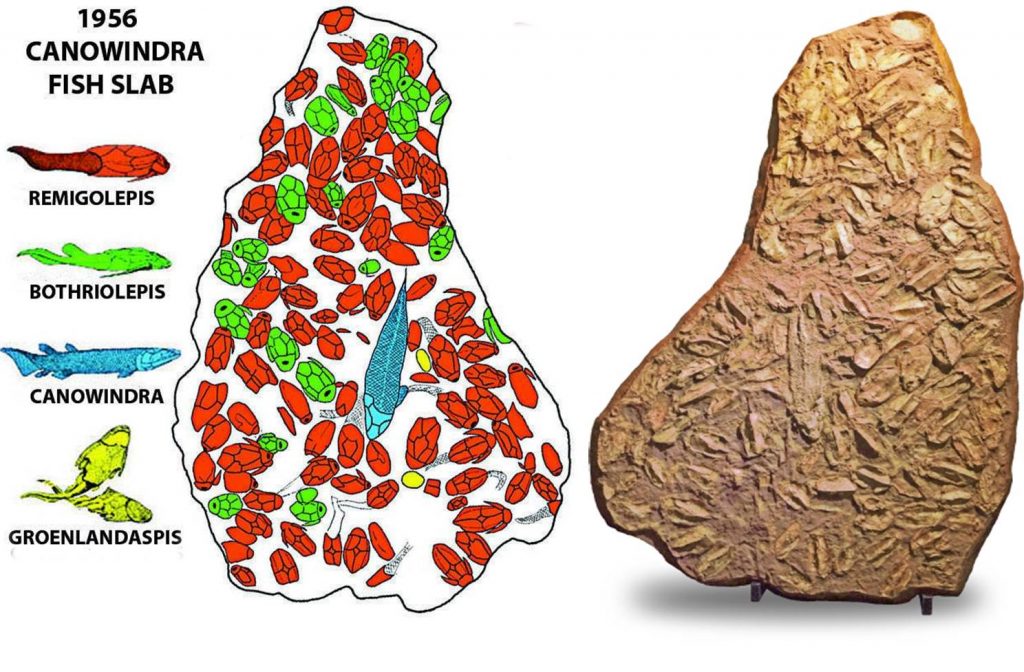
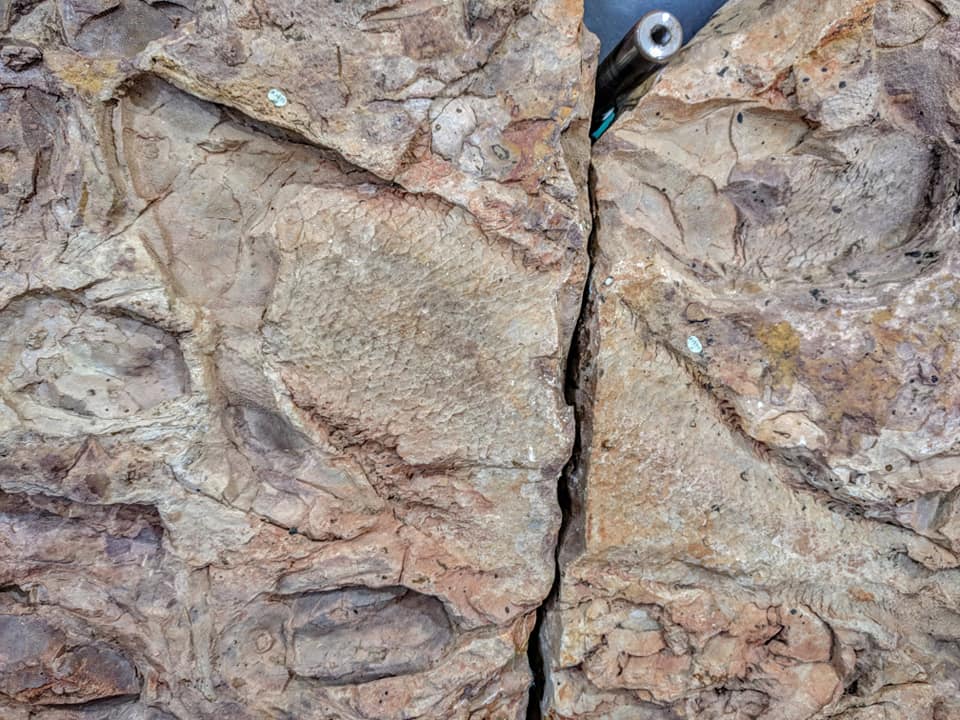
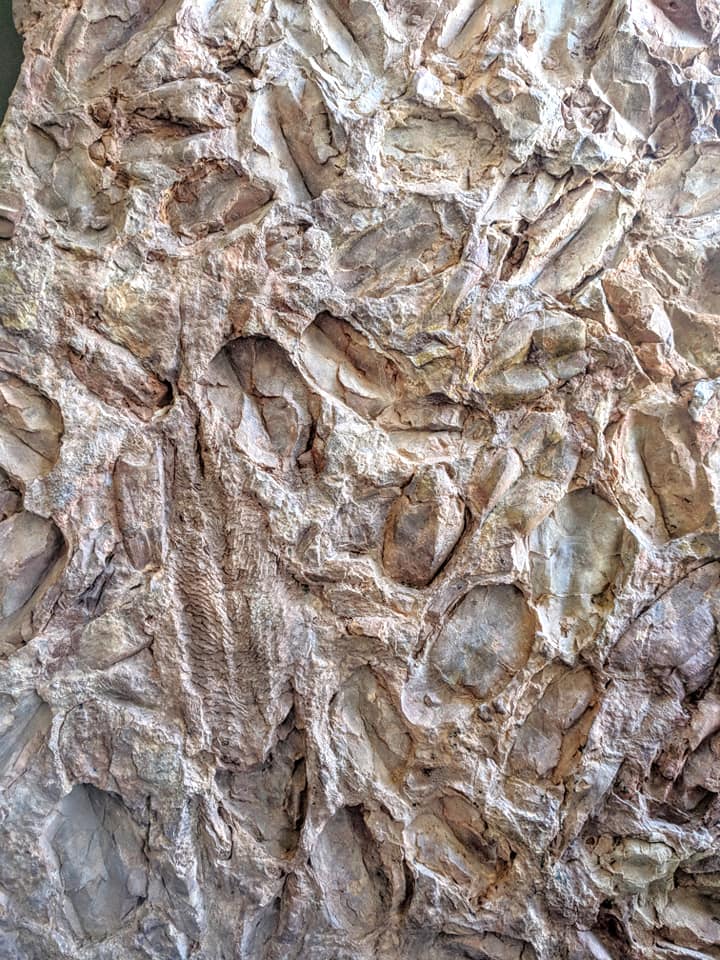
It all began with the chance discovery in 1955 when a Fred Fewings a bulldozer driver turns over a rock. Fred thought it looked interesting and instead of letting it be ground up into road base, he pushed it to the side of the road. This is lucky for us because local Bill Simpson recognised the slabs significance and informs the Australian Museum.
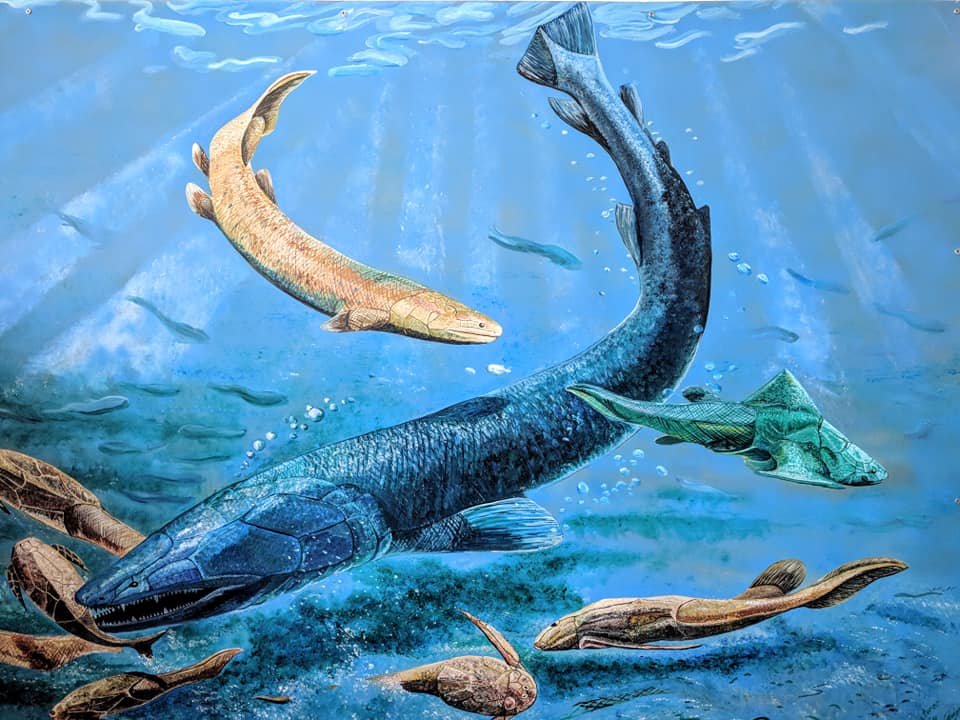
Step back in time and imagine what it was like 360 million years ago. In the Devonian the inland rivers and lakes of Australia were full of fish, but they were not like fish of today.
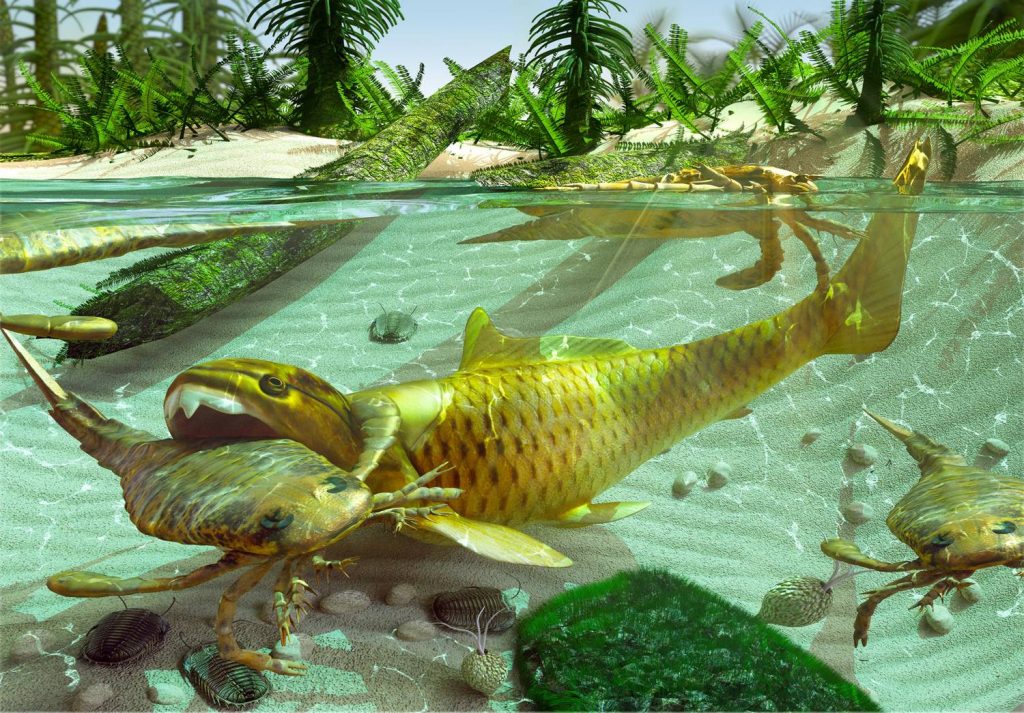
The fossils at Canowindra were formed when a pond on the supercontinent of Gondwana dried up and thousands of fish died in a single place. They were covered with silt and buried for millions of years, waiting to be discovered by Fred the bulldozer driver.
In 1993 Dr Alex Ritchie from the Australian Museum organised a rediscovery of this incredible the site and found 4,000 fish specimens across eight fish species.
Watch the video below of Sir David Attenborough’s visit to the Museum.
NSW State fossil
Mandageria fairfaxi was a large, air-breathing lobe-finned fish that grew up to 1.7 metres long. It had powerful jaws lined with many large fangs, making it the top predator among the eight genera of fish known from the Devonian fauna at the Canowindra site. In 2015 Mandageria fairfaxi became the NSW state fossil.
Find out more at the Ages of Fish Museum, the Australian Museum and Paleo Zoo.

